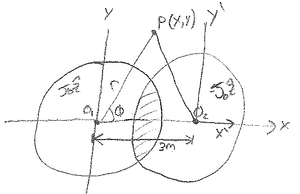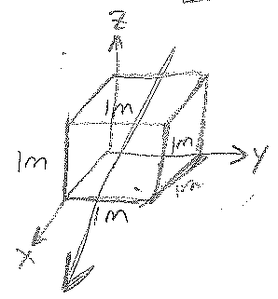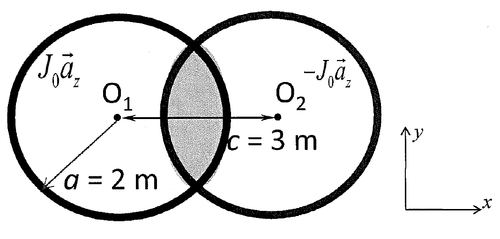| Line 27: | Line 27: | ||
=Solution= | =Solution= | ||
:'''Click [[ECE_PhD_QE_FO_2013_Problem1.1|here]] to view student [[ECE_PhD_QE_FO_2013_Problem1.1|answers and discussions]]''' | :'''Click [[ECE_PhD_QE_FO_2013_Problem1.1|here]] to view student [[ECE_PhD_QE_FO_2013_Problem1.1|answers and discussions]]''' | ||
| − | |||
| − | |||
| − | |||
| − | |||
| − | |||
| − | |||
| − | |||
| − | |||
| − | |||
| − | |||
| − | |||
| − | |||
| − | |||
| − | |||
| − | |||
| − | |||
| − | |||
==Question 2== | ==Question 2== | ||
| Line 129: | Line 112: | ||
</math> | </math> | ||
| − | |||
| − | |||
| − | |||
| − | |||
| − | |||
| − | |||
| − | |||
| − | |||
| − | |||
| − | |||
| − | |||
| − | |||
| − | |||
| − | |||
| − | |||
| − | |||
| − | |||
| − | |||
| − | |||
| − | |||
| − | |||
| − | |||
| − | |||
| − | |||
| − | |||
| − | |||
| − | |||
| − | |||
| − | |||
| − | |||
| − | |||
| − | |||
| − | |||
| − | |||
| − | |||
| − | |||
| − | |||
| − | |||
| − | |||
| − | |||
| − | |||
---- | ---- | ||
[[ECE_PhD_Qualifying_Exams|Back to ECE Qualifying Exams (QE) page]] | [[ECE_PhD_Qualifying_Exams|Back to ECE Qualifying Exams (QE) page]] | ||
Revision as of 21:51, 24 April 2017
Fields and Optics (FO)
Question 1: Statics 1
August 2013
Question 1
Solution
- Click here to view student answers and discussions
Question 2
Solution
$ \begin{align*} \nabla \cdot \bar{D} &= \rho \\ \quad (\frac{\partial}{\partial x}\hat{x}+\frac{\partial}{\partial y}\hat{y}+\frac{\partial}{\partial z}\hat{z})\cdot(2\hat{x})&=\rho \\ \frac{\partial}{\partial x}(2)&=0=\rho \quad \text{(no charge)} \end{align*} $
Also:
$ \begin{align*} \oint \bar{D}\cdot d\bar{S}&=Q\\ &=\int2(dS_x)+\int2(-dS_x)=2-2=\boxed{0} \end{align*} $
Question 3
Solution
Using superposition
In the left cylinder
$ \begin{equation*} \nabla\times \bar{H}=\bar{J} \longrightarrow \oint \bar{H}\cdot d\bar{l}=\int_S\bar{J}\cdot d\bar{S} \qquad \left\{ \begin{aligned} dl&=dr\hat{r}+rd\phi\hat{\phi}+dz\hat{z}\\ d\bar{S}_z&=rd\phi dr\hat{z} \end{aligned} \right. \end{equation*} $
$ \begin{align*} \int_0^{2\pi}H_{\phi}(rd\phi)&=\int_0^r\int_0^{2\pi} J_0(r'd\phi dr')\\ H_{\phi}(2\pi r)&=2\pi J_0(\frac{r^2}{2}) \\ & \boxed{\bar{H}=\frac{J_0r}{2}\hat{\phi}} \end{align*} $

$ \begin{align*} \text{Transform to cartesian:}&\left\{\begin{aligned} r&=\sqrt{x^2+y^2}\\ \hat{\phi}&=-sin\phi\hat{x}+cos\phi\hat{y}\\ &=(\frac{-y}{\sqrt{x^2+y^2}})\hat{x}+(\frac{x}{\sqrt{x^2+y^2}})\hat{y} \end{aligned}\right. \\ & \boxed{\bar{H}_L=\frac{J_0}{2}\left[-y\hat{x}+x\hat{y}\right]} \end{align*} $
In the right cilinder
$ \begin{align*} &\bar{H}_R=\frac{-J_0}{2}\left[-y'\hat{x'}+x'\hat{y'}\right]& \left\{ \begin{aligned} x'&=x-3\\ y'&=y\\ \hat{x}'&=\hat{x}\\ \hat{y}'&=\hat{y} \end{aligned} \right.\\ &\boxed{\bar{H}_R=\frac{-J_0}{2}\left[-y\hat{x}+(x-3)\hat{y}\right]}& \end{align*} $
$ \begin{equation*} \boxed{\bar{H}_T=\bar{H}_L+\bar{H}_R=\frac{3J_0}{2}\hat{y}} \end{equation*} $







